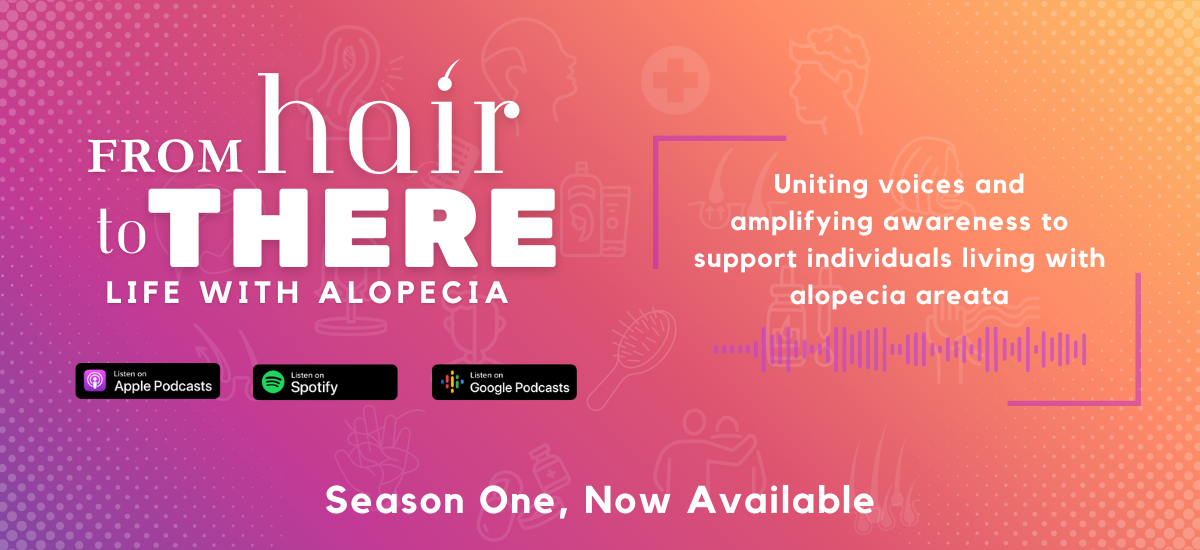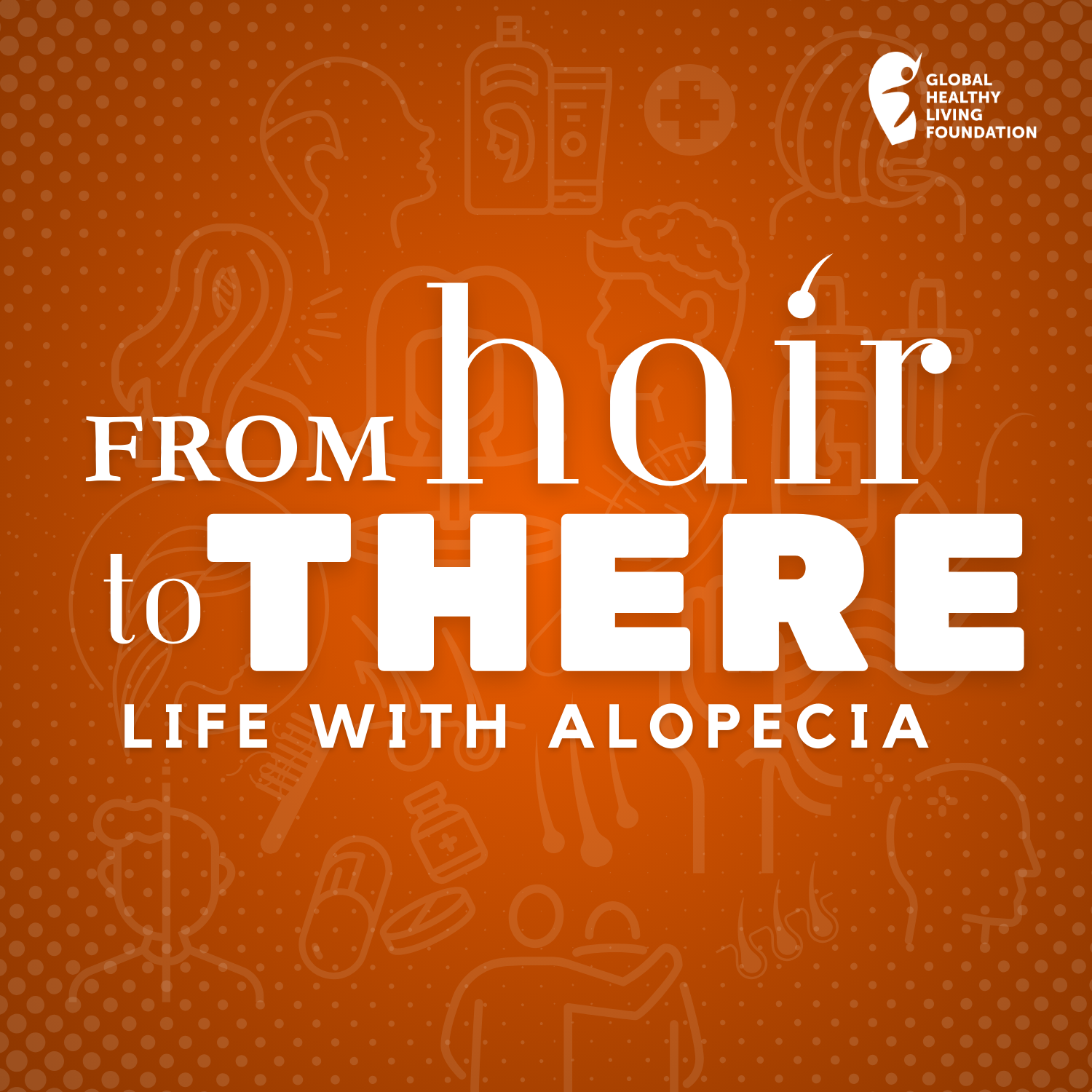Alopecia
About alopecia areata
Learn about the symptoms, diagnosis and treatment of alopecia areata, an autoimmune condition characterised by sudden hair loss.

Alopecia areata is an autoimmune condition known for causing sudden hair loss on your scalp and sometimes elsewhere on your body. Alopecia means “bald” and areata means “patchy.”
In alopecia areata, your body’s immune system mistakenly attacks hair follicles, which are small structures located just beneath the skin’s surface. These follicles produce various types of hair depending on their location in the body.
Alopecia areata isn’t as rare as you might think, affecting approximately 1 in 50 individuals at some point in their lives. It doesn’t discriminate — men and women from all backgrounds can experience it. Although it can appear at any age, most people encounter their first bout of alopecia areata before they reach 30.
Alopecia areata: beyond skin deep
While alopecia areata itself isn’t life-threatening and doesn’t inflict physical pain, its psychological effects can be profound. The unpredictable nature of the condition, namely losing hair suddenly and not knowing when – or if – it will grow back or fall out again, can be emotionally challenging.
“The vast majority of people struggle with the unpredictability of flares and remission, even if they’re on treatment,” says dermatologist Cathryn Sibbald, BScPhm, MD, MSc. “Many people with this condition constantly worry about whether they will wake up in the morning and face a new episode of hair loss.”
The mental and social impact of alopecia areata can be severe, adds patient advocate Sara Teskey, noting that it can cause you to miss school or work or avoid social activities “which are essential to caring for your mental health,” she says. “The way society views hair loss is very surface level, they don’t see beneath the skin — no pun intended.”
Recognising alopecia symptoms
People with alopecia areata often develop smooth, round patches of complete hair loss over a few weeks. Fortunately, for most, these areas gradually regrow hair over several months. However, some may grapple with alopecia areata for years or experience no hair regrowth at all.
While the scalp is the primary site for hair loss, alopecia areata can manifest anywhere on the body, including your eyebrows and eyelashes.
“The morning of my first high school exam I woke up without any eyebrows or eyelashes,” says patient advocate Lauryn Harrison. “I looked at my reflection and felt so stark. I couldn’t recognise myself; it was such a different appearance.”
A smaller fraction of individuals might lose all the hair on their head (alopecia totalis) or across their entire body (alopecia universalis).
Along with hair loss, alopecia areata can bring nail abnormalities, including multiple pits in the nails.
Getting an alopecia diagnosis
Diagnosing alopecia areata usually doesn’t require invasive procedures like biopsies. Physicians can typically identify it based on the distinct patterns of hair loss they observe. Occasionally, they may recommend blood tests to check for other underlying conditions.
“How we diagnose [alopecia areata] is very important to go over because this is really a clinical diagnosis, meaning that there is no test that you can do that sort of bings and says ‘yes, you have alopecia areata,’” says Dr Sibbald. “We take the history of how it started, what other things were going on at the same time, family history of similar conditions, and we put that together with what we see on our clinical exam. In that process, we are sort of excluding some other potential mimickers of alopecia areata.”
Alopecia treatment options
If you decide to pursue treatment, several options are available. It’s essential to remember that alopecia areata can’t be permanently cured, and most individuals experience recurring episodes of hair loss.
However, there is lots of “hope” when it comes to treatment, says Julien Ringuet, MD, MSc, FRCPC. “There’s more and more awareness of the disease and its impact on life and that leads to the development of newer treatments,” he says.
Available treatments for alopecia areata include:
- Corticosteroids: Often referred to as steroids, are anti-inflammatory drugs used to combat alopecia areata. They can be administered through injections, topical applications (like creams or lotions), or oral pills. Steroids stimulate hair regrowth, though results may take some time to become apparent.
- Topical minoxidil: Available without a prescription (commonly known as Rogaine), topical minoxidil, extends the hair follicles’ growth phase and encourages hair production.
- Anthralin: Initially designed for psoriasis treatment, anthralin was later found to promote hair regrowth in mild alopecia areata cases. However, it can cause potential skin and eye irritation.
- Topical sensitisers: This type of topical therapy entails applying a substance that triggers an allergic reaction to the hair loss area. The ensuing itching, scaling, and irritation can, intriguingly, lead to hair growth, although the exact mechanism isn’t fully understood. Two topical sensitisers are used in alopecia areata treatment; squaric acid dibutyl ester (SADBE) and diphenylcyclopropenone (DPCP).
- Immunosuppressive drugs: Drugs that suppress the immune system, such as methotrexate, and cyclosporine, may be considered. However, they are typically reserved for severe or rapidly progressing hair loss.
- Janus kinase (JAK) inhibitors: These are treatments that target and suppress specific parts of the immune system related to autoimmune conditions. Oral JAK inhibitors are already available in Australia for conditions such as rheumatoid arthritis. One JAK inhibitor (baricitinib) has been approved for use for alopecia areata in Australia by the Therapeutic Goods Administration (TGA) but is not currently subsidised through the Pharmaceutical Benefits Scheme (PBS),
Not all individual treatment options may be available depending on where you live around the world so be sure to check with your provider on what options, including new and emerging treatments, may be approved and available to you.
For individuals with extensive hair loss, wigs or hairpieces can be an option. Many also choose to shave their scalp. Temporary tattooing can help with lost eyebrows and false eyelashes or eyelash extensions are an option for missing eyelashes.
Finding support and community
Losing hair, especially suddenly, can take a toll on your mental health. If you find it challenging to cope with the emotional impact of hair loss, reach out to your healthcare provider. They can refer you to a mental health professional and/or recommend a support group to manage hair loss-related feelings.
“Once I accepted myself for who I was, and connected with the community, I realized the alopecia areata community has some of the most beautiful, strong, inspiring human beings on the planet,” says patient advocate Supriya Surender. “And it’s always such an honour to meet with them, talk with them and become friends with them.”
Remember, you’re not alone in your journey with alopecia areata. There are various ways to manage it and maintain a positive self-image.
From Hair to There: Life with Alopecia
GHLF’s podcast “From Hair to There: Life with Alopecia” raises awareness, amplifies the patient voice, and offers expert resources to support individuals living with alopecia areata. Listen now.
If this article has raised feelings that concern you, visit the Lifeline website or call 13 11 14.
This information should never replace the information and advice from your treating doctors. It is meant to inform the discussion that you have with healthcare professionals, as well as others who play a role in your care and well-being.
This article has been adapted, with permission, from a corresponding page on the Global Healthy Living Foundation US website which was made possible with support from Pfizer. Some content may have been changed to suit our Australian audience.
Australasian College of Dermatologists: Alopecia Areata https://www.dermcoll.edu.au/wp-content/uploads/2022/02/Alopecia-Areata-A-Z-of-Skin.pdf
Australia Alopecia Areata Foundation (AAAF): Treatments https://aaaf.org.au/treatments
Malhotra, K, et al. “An Updated Review on Current Treatment of Alopecia Areata and Newer Therapeutic Options.” International Journal of Trichology. 2023. doi: https://doi.org/10.4103/ijt.ijt_28_21.
NYU Langone Health: Types of hair loss.
Sibbald, C. “Alopecia Areata: An Updated Review for 2023.” Journal of Cutaneous Medicine and Surgery. May 2023. doi: https://doi.org/10.1177/12034754231168839.


